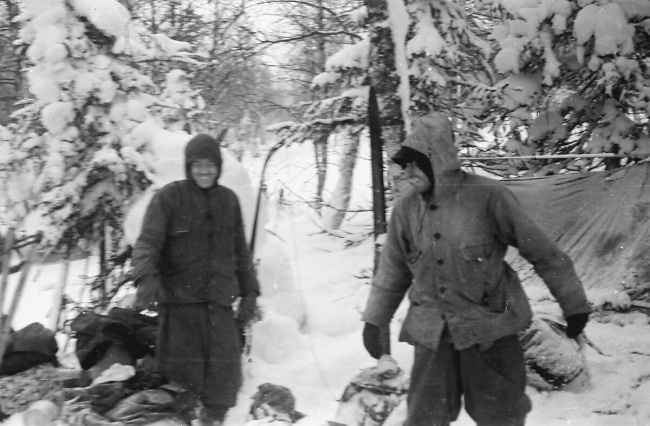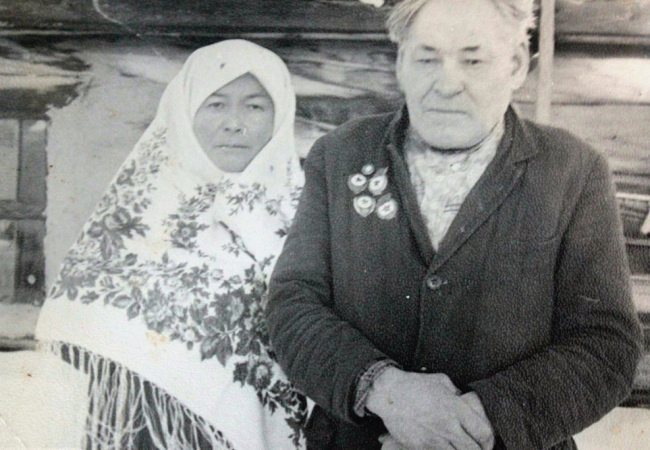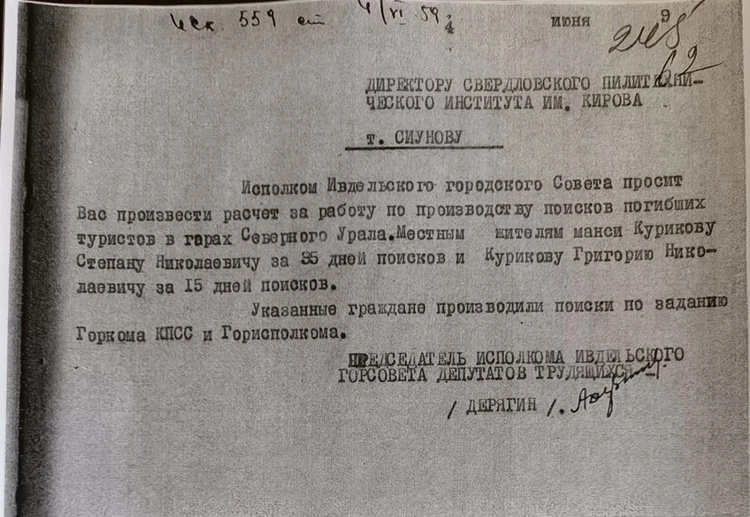
Mansi trail in the Dyatlov Pass case
New archival documents on the search for the missing Dyatlov group
April 1, 2023. All rights belong to Komsomolskaya Pravda. Authors Nikolay Varsegov and Natalya Varsegova
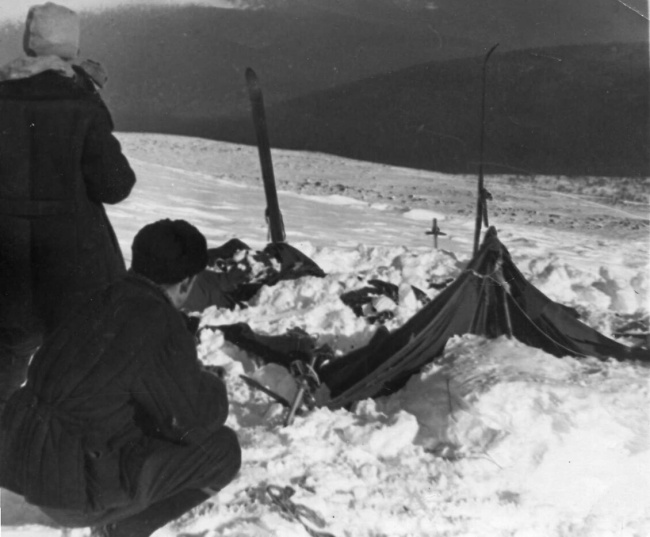
For more than half a century, researchers have been trying to understand how did a group of hikers die in the Northern Urals.
This tragedy happened on the night of February 2, 1959. Although it would be more correct to say, "allegedly on the night of February 2". After all, even the exact date of the death of the hikers is still unknown. And this is far from the only secret of the Dyatlov Pass, and over time, there are more and more of them, these secrets...
The incident took place in the winter of 1959, nine hikers disappeared in the mountains of the Northern Urals: a fifth-year student of the Ural Polytechnic Institute (UPI), the head of the group Igor Dyatlov, as well as Yuri Krivonischenko, Yuri Doroshenko, Rustem Slobodin, Zinaida Kolmogorova, Lyudmila Dubinina, Aleksander Kolevatov, Nikolay Thibeaux-Brignolle and Semyon Zolotaryov. For 16 days, the participants of the trek had to ski in the north of the Sverdlovsk region for at least 300 km and climb two peaks of the Northern Urals. The campaign belonged to the third (highest) category of difficulty.
A month later, rescuers found an empty tent of the group... And five frozen bodies within a radius of one and a half kilometers. The bodies of the rest were found only in May. Almost all the hikers were shoddy and half-dressed. Some had fatal injuries. According to investigators, the tragedy happened on the night of February 1-2. But it has not yet been figured out why the seasoned hikers fled from the tent into the bitter cold and to their death. Dozens of different versions of the tragedy have appeared in our time: from an avalanche to a Bigfoot attack.
However, the first under the suspicion of investigators in 1959 were the local Mansi. Several people were arrested and interrogated. Investigator Vladimir Korotaev from Ivdel said that the suspects were even driven out half-dressed into the cold in order to be interrogated. We cannot vouch for the veracity of such memories, but there are interrogations of the Mansi in the criminal case.
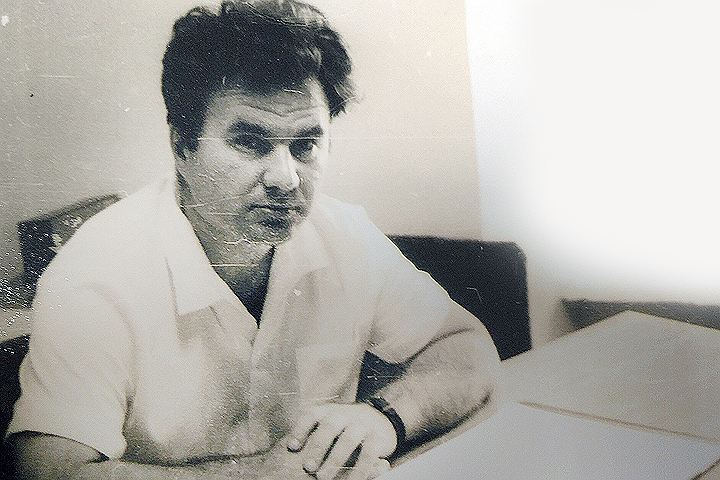
Investigator Vladimir Korotaev told how Mansi was detained
WHO ARE THEY?
Mansi is a small population of northern people living in the Khanty-Mansiysk Autonomous Okrug and in the Northern Urals. Now there are no more than 12 thousand people. From as long as they remember people have lived by hunting and fishing. Previously, the Mansi bred deer, grazed herds on taiga pastures, now this everyday culture is practically lost. In 1959, according to archival records, 44 Mansi families lived in 11 villages of the Ivdelsky district. Total of 176 people. Some families are nomadic.
"Periodically they wander from one place to another" - it is written in the decision of the executive committee of the regional council of deputies. - "The places of their final settling have not been determined."
What does it mean? The Mansi roamed the taiga along with deer herds, choosing the territories richest in food. They lived in yurts. At the same time, they hunted fur-bearing animals, hunted elks and birds. However, many village Mansi also lived in yurts.
By faith, the Mansi are pagans. There are special places in the taiga - sanctuaries where they perform rituals, sacrificing deer to the gods.
- 2 -
- 3 -
FOLLOWED THE TRACK
The Dyatlov group, judging by the diaries, were keenly interested in the Mansi theme. They wrote down unfamiliar words (oyka - a man, ekva - a woman, ushnik - a Mansi hunting lodge for heating, tol - I - a thawed river, sos - a stream, rum - a friend, nache (nasche) - hello, ayserm - cold, etc. ). Their route was going along a Mansi trail.
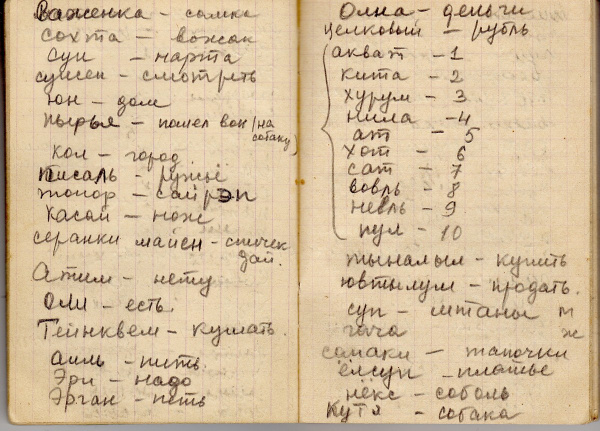
Mansi words written down in Zina Kolmogorova's diary
"We are following the beaten Mansi ski trail," Igor Dyatlov writes in the group’s diary on January 31. - Until now, we have been walking along the Mansi trail, along which a hunter rode on reindeer not very long ago. Yesterday we reached, apparently, his overnight stay, the hunter went along the notches of the old path, we are following his trail now.
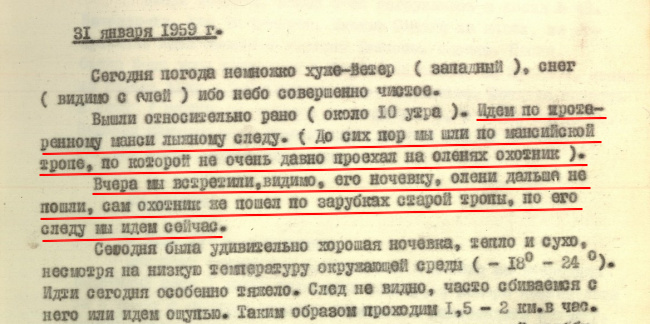
A typed copy of the diary is kept in the criminal case on the death of the Dyatlov group
On January 25, about a week before the tragedy, the Dyatlov group arrived in the village of Vizhay. They stopped for the night. From there, they planned to go towards Mt Otorten (the key point of the route of the Dyatlov group).
Now the floor is given to local resident Vladimir Androsov. He was born and lived in Vizhay. In 1959, Vladimir was a boy, but when he grew up, he was interested in details from local foresters. They said that there were two routes to get to Otorten. One, as it were, bypasses, the second - in short - along the Mansi path, which begins at the Lozva River.
- On it, the Mansi herd deer in the spring to the Urals, and in the fall from the Urals to the taiga, Vladimir told the researcher Maya Piskareva. - These trails are old and excellent to follow, all hikers walked only along them. And at that time they were marked on the maps.
MOUNTAIN QUEEN
Hoy-Ekva appears on many of the photographs made by the Dyatlov group. According to Androsov, translated from the Mansi "Woman-Queen", but there is another translation - "Stop, woman", which directly means that a woman cannot go up the mountain. Because there was Turum-kan, a holy place for the Mansi on the slope of the western foot of the mountain.
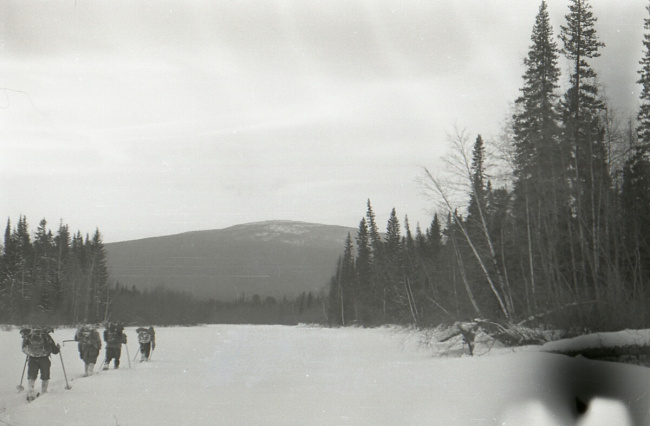
Hoy-Ekva mountain was up ahead while the hikers were walking along Lozva
Dmitry Kireev, a Ural businessman and researcher of the tragedy, does not rule out that Hoy-Ekva could play a special role in this mysterious story.
- When Igor Dyatlov and his comrades walked along Lozva, the mountain was in front, it can be clearly seen in the photo, Dmitry says. - Then they turned, Hoy-Ekva remained to the left. The guys stopped several times to take pictures. The photographs show that they walked slowly, carefully examining the surroundings.
- 4 -
Further developments of events will be presented by us as Dmitry's version.
So, if we assume that there really was Turum-kan on Hoy-Ekva, then, most likely, the hiking group could not pass by.
- According to some sources, on January 25, the Mansi celebrated some kind of holiday in those years and came in large crowds to holy places to make sacrifices and gifts to the gods, Kireev continues. - It is clear that they did not climb the mountain, they gathered at the foot. They slaughtered a deer, performed ceremonies, left various jewels on the sanctuary. These could be ancient silver bowls, pendants, figurines made many centuries ago and passed down from generation to generation. Anything, even fur.

Dmitry Kireev shows what decorations the Mansi presented as a gift to the gods
The Dyatlov group were near by those places on January 29-30. The weather was warm and it didn't snow. Curious hikers could have followed the well-trodden path to Turum-kan. It's interesting to see where the tracks lead. Did the hikers know that in such places it’s not only impossible to take anything, but even go there? We doubt. We assume that one of them could have taken some figurine as a trek memorabilia. They collected mineral stones for the institute. Sports trips were held not only for the sake of new qualifications, but also as educational and cultural finds.
We will not speculate about what happened next, whether the Mansi could avenge the invasion of holy territory. No one has the right to accuse people without evidence. But to assert, as many opponents of this version are doing now, that the Mansi cannot harm anyone, is also naive.
Be that as it may, soon after the tragedy, several representatives of the Mansi people were detained by the police.
- 5 -
TO SVERDLOVSK ON SKIING
Natalya Dobrynina is the granddaughter of the Mansi shaman Stepan Kurikov. Her grandfather took part in the search for the Dyatlov group and enjoyed authority not only among his people, but also among Russians. No wonder he was elected a deputy of the regional council.
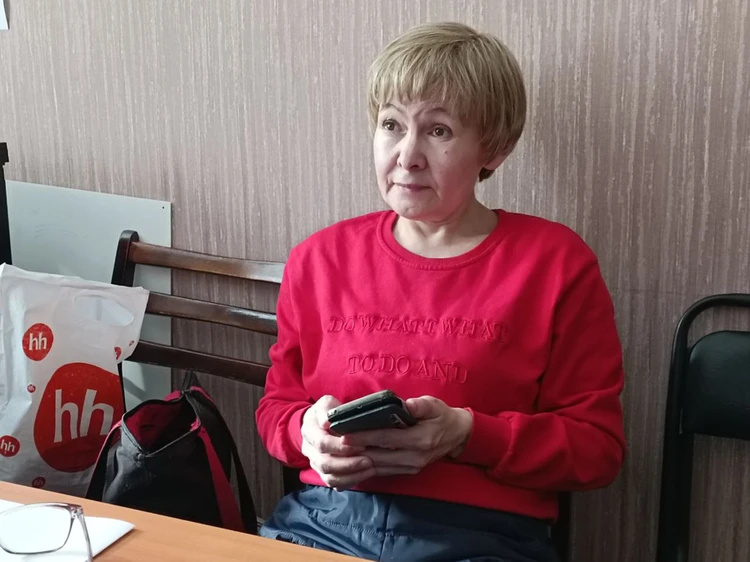
Natalia Dobrynina remembers her grandfather Stepan Kurikov
- I was born in 1972, but I heard about this story from relatives more than once, Natalya recalls. - When the Mansi were detained on suspicion, grandfather's older brother Grigoriy Kurikov, also a deputy, went to Sverdlovsk on skis to get an appointment with the big bosses and ask them to let our people go. And this in a straight line is 500 km!
Whether Grigory met with big bosses, Natalya does not know. But apparently suspicions were removed from the Mansi.
Natalya Dobrynina assures that the Mansi will never take revenge. If strangers encroached on the sanctuary, then the punishment of heaven itself will overtake them. And yet, the woman does not deny that the Mansi could kill. It happened in a drunking outpost, for example. And, as in any nation, there are very vindictive people among them. They even have a special ritual - to send death to each other. All their lives they can send such "greetings" to offenders.
- I myself am like that, I remember who and when offended me, - says Natalya.
CRUEL CUSTOMS
In general, according to Natalya, the manners of the Mansi people are very strict. She lived with her grandfather in the summer. Natalya, a little girl, was forbidden to sit on her grandfather's bed, or his stool. The female sex is considered unclean by the Mansi, hence all the prohibitions.
- I remember that my grandfather offended me, - Natalya recalls. We sat at a table outside, eating meat with our hands. And mosquitoes dig into my legs, I automatically grab my leg with my hand and again for a piece of meat. Grandfather immediately slapped my hands and kicked him out of the table - don't do that, scratching your dirty feet and then desecrate the food we are eating.
Here is another case from the life of the Kurikovs. Somehow, Grandma Praskovya decided to do something "bad" to her husband. It means to conjure death. Apparently, Stepan offended his wife strongly. She made dolls and hid them in different places in the forest.
- But my grandfather was a shaman, he sensed something was wrong, found the dolls and brought them home, - says Natalya. "I was visiting them at the time. It was horrific to watch them fight!"
Kurikov then was merciful on his Praskovya. What will you take from her. But there were more cruel cases. Vladimir Korotaev recalled that he had to investigate the murder of Mansi Anyamov of his wife. He suspected her of treason and, not relying on heavenly punishment, tied her to a pine tree. He cut her legs and left. Taiga mosquitoes ate the woman alive.
- 6 -
HOW MUCH WERE THEY PAID FOR THEIR PART IN THE SEARCH?
The fact that the Mansi from the first days took part in the search for the Dyatlov group is no secret to anyone. They didn't do it for free. It's also a known fact. In one of the radiograms dated February 23, the text says that Mansi have to be paid 500 rubles a day for the work. Not a lot! Yes, it’s just that we don’t know whether they the Mansi got paid.
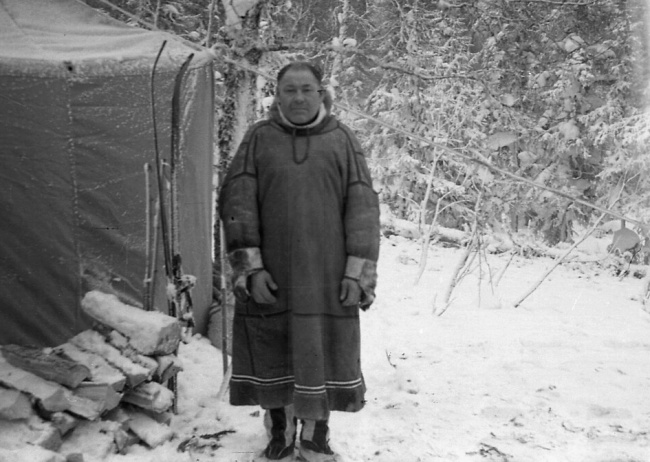
Stepan Kurikov was the head in the search for a group among the Mansi
Recently, in one of the archives, we found interesting documents in which the Ivdel deputies in June 1959, when both the search and the investigation had long been completed, literally begged the director of the Ural Polytechnic Institute to pay the Mansi for the work done. We quote:
"The executive committee of the Ivdel city council of working people's deputies asks you to pay for the participation in the search for the dead hikers in the mountains of the Northern Urals. To local residents of the Mansi Stepan Nikolaevich Kurikov for 35 days of searching and Grigoriy Nikolaevich Kurikov for 15 days of searching.
These citizens carried out searches on the instructions of the City Committee of the CPSU and the City Executive Committee."
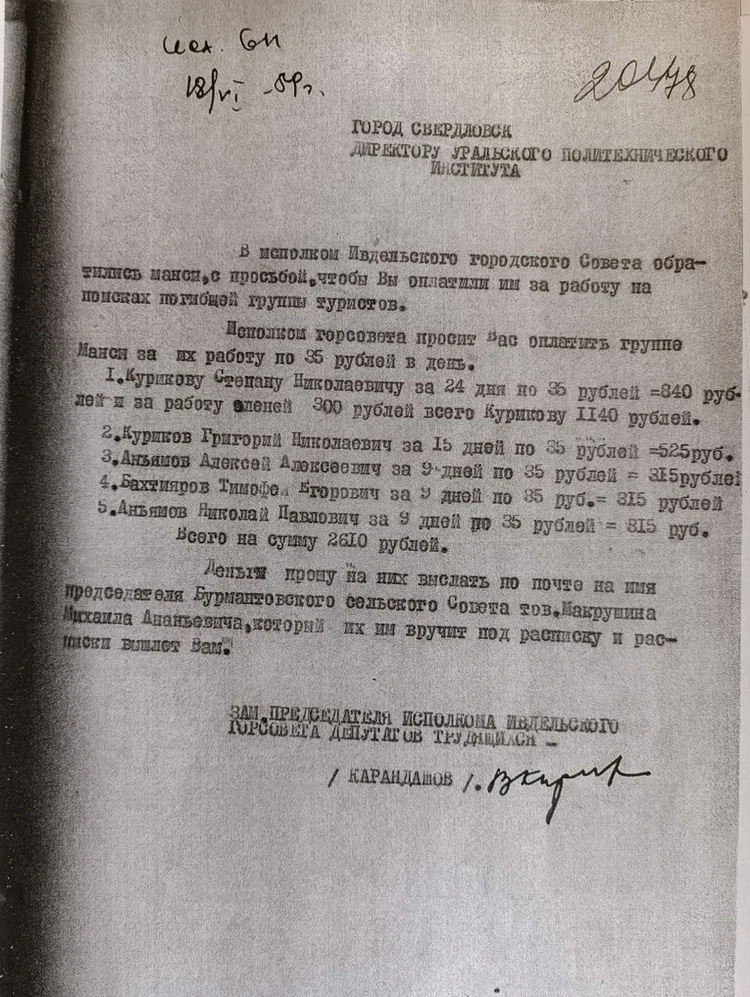
After the end of the search and closing the case, the Mansi are forced to beg for their money
"Mansi addressed the executive committee of the Ivdel City Council with a request that you pay them for their work in search of the dead group of hikers. The Executive Committee of the City Council asks you to pay the Mansi group 35 rubles a day for their work.
Stepan Nikolaevich Kurikov for 24 days 35 rubles each = 840 rubles and 300 rubles for providing reindeer. Total Kurikov 1140 rubles.
Grigoriy Nikolaevich Kurikov 35 rubles for 15 days = 525 rubles
Aleksey Alekseevich Anyamov 35 rubles for 9 days = 315 rubles
Timofey Egorovich Bahtiyarov 35 rubles for 9 days = 315 rubles
Nikolay Pavlovich Anyamov 35 rubles for 9 days = 315 rubles
Total 2610 rubles
I ask you to send money for them by mail addressed to the chairman of the Burmantovo village council, comrade Makrushin Mihail Ananyevich, who will hand them over to them against receipt and send receipts to you."
That's how 500 rubles a day dropped to 35 a day. We don't even know if at least they were paid this money in the end or not.
FROM THE AUTHORS
We thank entrepreneur Dmitry Yuryevich Kireev for his help in preparing the material. If you have reliable information about this story, write: vars@kp.ru, konata@kp.ru.



